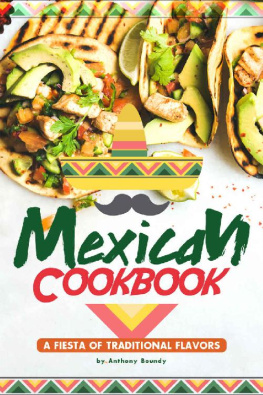No part of this publication may be reproduced, stored in a retrieval system or transmitted in any form or by any means, electronic, mechanical, photocopying, recording, scanning or otherwise, except as permitted under Section 107 or 108 of the 1976 United States Copyright Act, without the prior written permission of the publisher. Requests to the publisher for permission should be addressed to the Permissions Department, Rockridge Press, 918 Parker St., Suite A-12, Berkeley, CA 94710.
Limit of Liability/Disclaimer of Warranty: The publisher and the author make no representations or warranties with respect to the accuracy or completeness of the contents of this work and specifically disclaim all warranties, including without limitation warranties of fitness for a particular purpose. No warranty may be created or extended by sales or promotional materials. The advice and strategies contained herein may not be suitable for every situation. This work is sold with the understanding that the publisher is not engaged in rendering medical, legal, or other professional advice or services. If professional assistance is required, the services of a competent professional person should be sought. Neither the publisher nor the author shall be liable for damages arising herefrom. The fact that an individual, organization, or website is referred to in this work as a citation and/or potential source of further information does not mean that the author or the publisher endorses the information the individual, organization, or website may provide or recommendations they/it may make. Further, readers should be aware that Internet websites listed in this work may have changed or disappeared between when this work was written and when it is read.
For general information on our other products and services or to obtain technical support, please contact our Customer Care Department within the United States at (866) 744-2665, or outside the United States at (510) 253-0500.
Rockridge Press publishes its books in a variety of electronic and print formats. Some content that appears in print may not be available in electronic books, and vice versa.
TRADEMARKS: Rockridge Press and the Rockridge Press logo are trademarks or registered trademarks of Callisto Media Inc. and/or its affiliates, in the United States and other countries, and may not be used without written permission. All other trademarks are the property of their respective owners. Rockridge Press is not associated with any product or vendor mentioned in this book.
Contents
CHAPTER 1
LA COCINA VEGANA
CHAPTER 2
BREAKFAST
ARROZ SIN LECHE
(MEXICAN RICE PUDDING)
TOFU HUEVOS RANCHEROS
(RANCHERS EGGS)
MIGAS
(PAN FRIED TORILLAS AND TOFU EGGS)
CHILAQUILES
(PAN FRIED TORTILLAS WITH SALSA RANCHERA)
MOLLETE
(OPEN-FACED BREAKFAST SANDWICH)
CHAPTER 3
SALADS, SOUPS, AND STEWS
SOPA DE FIDEO
(MEXICAN NOODLE SOUP)
GUISO DE FLOR DE CALABAZA
(SQUASH BLOSSOM STEW)
PICADILLO
(BEEF-STYLE STEW)
CHAPTER 4
SNACKS AND APPETIZERS
ELOTES
(CORN ON THE COB)
ALMOND QUESO COTIJA
(ALMOND COTIJA CHEESE)
CASHEW QUESO FUNDIDO
(CASHEW CHEESE DIP)
SEAFOOD-STYLE ALBONDIGAS
(MEATBALLS)
PAPAS BRAVAS
(SPICY POTATOES)
CHAPTER 5
TACOS, TORTAS, AND TAMALES
TACOS DE SUADERO
(BEEF-STYLE TACOS)
TACOS AL PASTOR
(PINEAPPLE AND CHILE-MARINATED PORK-STYLE TACOS)
TACOS DE NOPALES
(NOPAL CACTUS TACOS)
SEITAN BISTEC TORTAS
(STEAK-STYLE SANDWICH)
JACKFRUIT CARNITAS TORTAS
(PORK-STYLE SANDWICH)
BLACK BEAN BURGUESA TORTAS
(MEXICAN BLACK BEAN BURGERS)
CHAPTER 6
BURRITOS, FAJITAS, AND MS
EL ORIGINAL
(CLASSIC BEEF AND BEAN BURRITOS)
BURRITOS ENMOLADOS
(BURRITOS IN MOLE SAUCE)
ENMOLADAS VERDES WITH CHICKEN-STYLE SETAS
(CHICKEN-STYLE ENCHILADAS WITH GREEN MOLE SAUCE)
CHAPTER 7
RICE, BEANS, AND SIDES
ARROZ ROJO
(RED RICE)
ARROZ ENCHILADO
(SPICY CHILE RICE)
ARROZ SIN POLLO
(RICE AND VEGAN CHICKEN)
ARROZ CON FRIJOLES NEGROS
(RICE AND BLACK BEANS)
ARROZ CON CHORIZO Y PLATANO MACHO
(RICE WITH VEGAN CHORIZO AND PLANTAINS)
ARROZ A LA TUMBADA
(RICE AND VEGAN SEAFOOD)
ARROZ CON NOPALES
(RICE WITH NOPAL CACTUS)
NOPALES GUISADOS
(STEWED NOPAL CACTUS)
CREAMED CALABACITAS
(LITTLE SQUASH)
RAJAS CON CREMA
(SLICED PEPPERS WITH CREAM)
CHAPTER 8
SAUCES AND SALSAS
CHAPTER 9
DRINKS AND DESSERTS
CHAMPURRADO
(THICK MEXICAN HOT CHOCOLATE)
CAPIROTADA
(MEXICAN BREAD PUDDING)
BUUELOS (FRIED TORTILLAS)
WITH CINNAMON PILONCILLO
AND CARAMEL SAUCE
CHURROS WITH SPICED
MEXICAN CHOCOLATE SAUCE
CONCHAS
(MEXICAN SWEET BUNS)
CHAPTER 10
STAPLES
SEARED CHICKEN-STYLE SETAS
(OYSTER MUSHROOMS)
GARBANZORIZO
(MEXICAN CHICKPEA CHORIZO)
Introduction
F or as long as I can remember, Ive been passionate about cooking. Its always played a major role in my life. My mother likes to tell the stories about how I made her breakfast-in-bed crepes when I was seven years old as a get well gesture, and how I baked a three-tier cake for my own 10th birthday. She always seems to leave out the part about how my cake turned out lopsided and flat. Truth is, it wasnt until after I learned a few things working at Spiral Diner, an all-vegan restaurant and bakery in Dallas, that I got my baking chops down.
I was born and raised in the South Texas border town of Brownsville by Mexican immigrant parents and an abuelita who taught me everything in the kitchen. My grandmother came to the United States from Guanajuatoarguably the most beautiful state in all of Mexicoand brought with her many wonderful traditions and food rituals, like communal cooking.
From an early age, I learned how to make Mexican staples like homemade corn and flour tortillas, beans a la charra, and Mexican red rice. I was also taught more elaborate pre-Hispanic foods like tamales, many of which we gave away as Christmas presents to friends and family. In fact, I still vividly remember making the rounds every Christmas eve to all my tas and tos houses to proudly hand-deliver their dozens of tamales that took us all day to make.
Spending my childhood in the kitchen with Grandma was exciting and incredibly enriching. From her, I learned to embrace my mestizo heritage and celebrate the joys of Mexican cooking.
Mexico has a rich and diverse food history. In pre-Hispanic Mesoamerican cuisine, there was a big focus on fruits, vegetables, legumes, and grains. Grandma simplifies it: Before the Spanish came to Mexico, food was provided by the sun and earth. My Spanish ancestors fused their culinary traditions with indigenous foods to shape modern Mexican cuisine.
In the ancient Maya civilization, growing plants for food was so vital that the vast majority of the people were involved in vegetable farming; developing sophisticated systems to maximize production of beans, squash, and maize. Yum-Kaaxthe Young Maize Godwas perhaps the most important of the Maya deities, and is often depicted in Maya mythology wearing a headpiece in the shape of an ear of maize. Maize, just like rice in most East Asian countries and wheat in Europe, was the grain that served as the base for virtually every meal for the Maya.

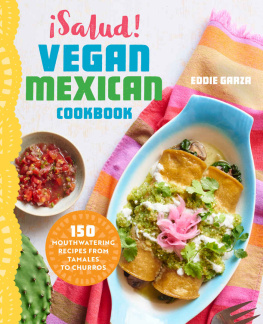
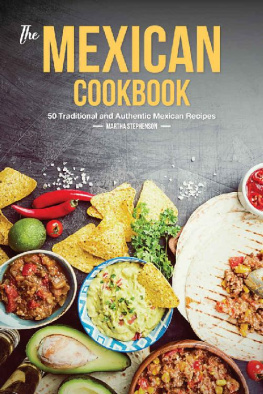
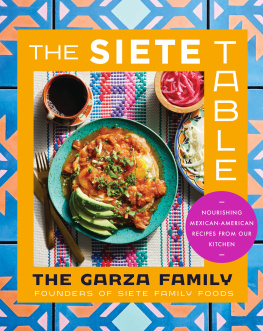
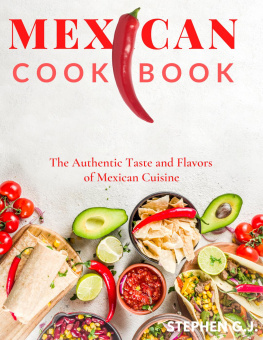

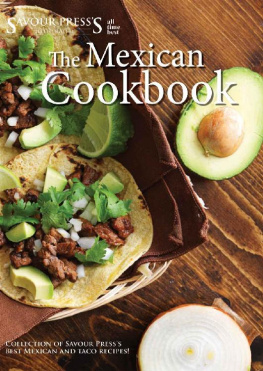
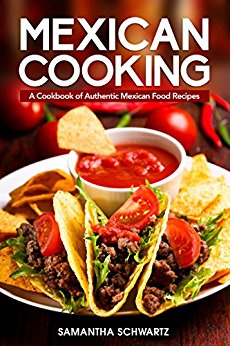
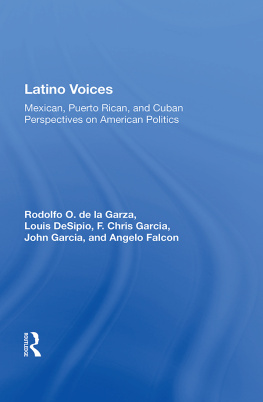
![Avery Moore - Mexican Cookbook 365: Tasting Mexican Cuisine Right In Your Little Kitchen! (Best Mexican Cookbook, Mexican Dessert Cookbook, Slow Cooker Mexican Cookbook, Mexican Salsa Cookbook) [Book 1]](/uploads/posts/book/288399/thumbs/avery-moore-mexican-cookbook-365-tasting-mexican.jpg)

